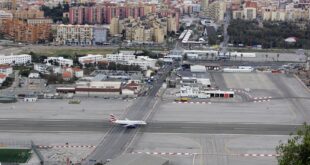TRAVELLERS planning a visit to one of Spain’s most iconic cultural destinations may encounter unexpected scenes of vandalism, as a wave of graffiti has recently defaced major historic sites in central Granada – including the world-renowned Alhambra and the charming Albaicin quarter.
On May 9, over 20 spray-painted graffitis appeared on some of the most important landmarks in the city. The most shocking message was one that read “borracho dot com” (drunkard.com), scrawled onto the Torre de los Siete Suelos. This is one of Alhambra’s historical towers. Authorities suspect this could be part of an anti-tourism demonstration.
Alhambra, a masterpiece Islamic architecture and a UNESCO World Heritage Site attracts over two million tourists annually. It is often referred to as the jewel of Spanish culture. Meanwhile, the Albaicin – a maze of whitewashed houses, cobbled alleys, and stunning viewpoints – offers a deeply atmospheric glimpse into Granada’s Moorish past and is a favourite neighbourhood for visitors to stay and explore.
Andalucian UNESCO Association issued an urgent appeal for increased security measures and quicker response protocols in order to protect these cultural landmarks. They warned that vandalism of this nature not only damages the physical structures, but also risks damaging Granada’s reputation as a premier cultural destination. The group warned that the attacks may jeopardize Granada’s bid to become European Capital of Culture for 2031.
Local heritage officials sent restoration crews out to remove the paint, and assess the extent damage. Patronato de la Alhambra y el Generalife (which manages the monument) is also urging public support for preservation efforts and to identify vandals.


It is not the first attack on Granada’s historic architecture. The most recent graffiti explosion is the largest and most coordinated in terms of scale.
Travellers planning to visit Granada within the next few weeks will find that most monuments are open, and cleaning is already in progress. Visitors may see some ongoing restoration and an increased security presence at major sites.
UNESCO also calls for educational and awareness campaigns in order to combat graffiti vandalism.
In a statement to the media, it expressed concern about the proliferation of graffiti around the Albaicín and all over its walls. Since 1994, the neighbourhood has been recognized as a World Heritage Site.
It would seem that though vandals that have been plaguing the centre of Granada and the Albaicín for many years now, this outbreak specifically targeted the monument as a magnet for tourism.
This is the first attack of such magnitude in the Alhambra.
In December 2011, graffiti was found on the walls overlooking Cuesta de los Chinos, which had just been restored.
In 2014, The Patronato de la Alhambra y el Generalife referred to graffiti that had appeared on monuments such as the Cathedral in Granada, Puerta delvira, and the Albaicin district.
It was a response of anger. “Graffiti, as a practice, is incompatible with the conservation and enhancements of heritage.” The materials are not damaged physically, but the contemplation and enjoyment of them is distorted.
To stop the vandals, a series of measures were implemented.
The committee responsible for the Alhambra appeals to the public to help them catch the perpetrators.
“It is important to denounce every fact. We propose to coordinate actions between local and regional forces in order to preserve the integrity of heritage and carry out exemplary acts. The committee stressed that in this regard, citizen cooperation is crucial.
 Costa News Spain Breaking News | English News in Spain.
Costa News Spain Breaking News | English News in Spain.






